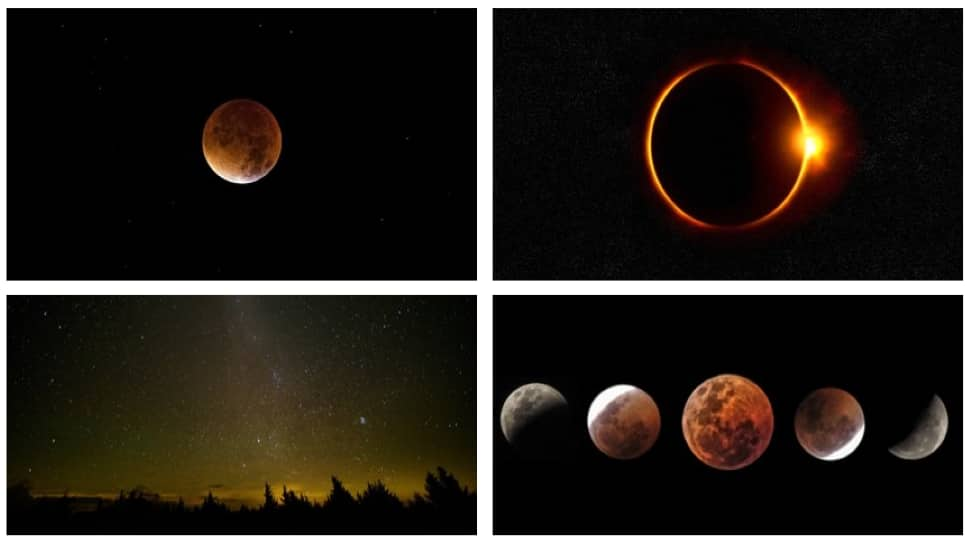
[ad_1]
Surya Grahan, Chandra Grahan 2023: Stepping into the new year, we all end up searching for festival dates and bank holidays. People also get curious about the various celestial events that are going to take place this year like eclipses, supermoons, meteor showers, comets etc. Eclipses are astronomical phenomena that take place at various times. Eclipses have two types, solar eclipses and lunar eclipses.
There won’t be a total solar eclipse this year, 2023 will witness a total of 4 eclipses; two solar eclipses and two lunar eclipses. Here is a list of celestial events in 2023 that you must not miss.
Solar eclipse (Surya Grahan) in 2023
On April 20, 2023 (Thursday) the first solar eclipse (Ningaloo eclipse) of the year will take place. This total solar eclipse, which will be visible across South and East Asia, Australia, the Pacific, the Indian Ocean, and Antarctica, may not be visible in India.
On October 14, 2023, there will be a second solar eclipse (Annular eclipse), which will be visible in parts of the United States, Mexico, and several other Central and South American nations. The solar eclipse on October 14 will not be visible to people in India, just like the earlier one this year.
Lunar eclipse (Chandra Grahan) in 2023
On May 5, 2023, there will be a penumbral lunar eclipse, which will be the first lunar eclipse of the year. The Pacific, Atlantic, Indian, and Antarctic hemispheres will all be able to see this moon eclipse.
The second lunar eclipse of 2023 will be a partial lunar eclipse on October 28 will be simpler to spot because a little portion of the Moon will appear darker and possibly even somewhat reddish, in contrast to the penumbral lunar eclipse on May 5 which will be difficult to see with the naked eye. Parts of South America, Asia, Australia, North America, parts of the Pacific, the Atlantic, the Indian Ocean, Antarctica, and the Arctic will all be able to see this partial moon eclipse.
Meteor shower in 2023
The maxima of the Perseid and Geminid meteor showers, the most frequent and reliable meteor showers of the year, will occur in the absence of the moon, according to Sky & Telescope. The Perseid meteor shower will occur in 2023 between July 17 and August 17, with the peak occurring on August 13, Sunday and the Geminids meteor shower will peak on the night of December 14, 2023, according to the online astronomy guide ‘In the Sky’.
The meteor shower’s peak will be visible in New Delhi starting at around 8.10 pm IST on August 13 and lasting until roughly 5.21 am IST on August 14. Thus, 2023 is a fantastic year to lie on your back and observe shooting stars in the night sky.
Supermoon in 2023
There will be a total of four supermoons in the year, but the one on August 31 will differ slightly from the others in certain ways that you might not be able to tell by simply looking at the supermoon. The full moon on August 31 will be a “monthly blue moon” since it will be the second full moon of the month following the full moon on August 1. No, the Moon won’t actually look blue; instead, this is just a cryptic term for when there is a second full moon in the same month.
[ad_2]
Source link